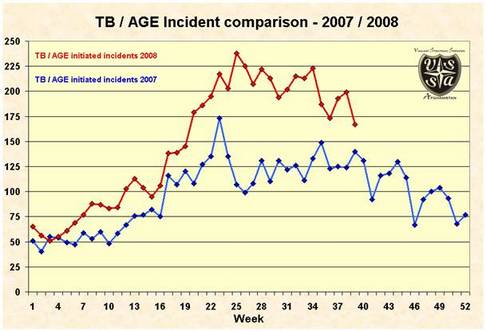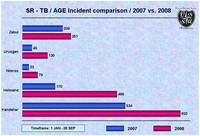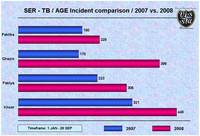US airstrikes in southern and southeastern Afghanistan met with both success and tragedy over the past 24 hours. A strike in Helmand province killed a senior Taliban commander, while another in Khost accidentally killed nine Afghan soliders. The attacks come as NATO has come under pressure to reduce civilian casualties while fighting a resurgent Taliban and al Qaeda force.
The Helmand strike killed a senior Taliban commander named Mullah Ghafar and two other fighters, the US military said in a press release. Ghafar operated along the border between Kandahar and neighboring Helmand province. He is also thought to have been behind numerous attacks in Farah and Nimruz province.
In 2006, the BBC reported Ghafar commanded a Taliban force estimated to have between 300 and 500 fighters. “He is allegedly in regular contact with the Iranian secret service via an Iranian-Baloch tribal family which is heavily involved in the opium trade,” according to the report. Ghafar was reportedly wounded in an airstrike that killed Mullah Janan, another senior Taliban leader, in Kandahar’s Panjwai district in July 2008.
|
Taliban and Anti-Government Element (AGE) incidents in the Southern Region, 2007 vs 2008. Click graph to view larger image. |
NATO has killed several high-profile Taliban leaders over the past year, yet the violence in the South has spiked. Taliban and anti-government related violence has nearly tripled in Uruzgan, Helmand and Nimroz provinces, and almost doubled in Kandahar, according to numbers compiled by Sami Kovanen, the Security Coordinator for Vigilant Strategic Services Afghanistan.
Large scale fighting and Taliban attacks have been frequent. Today, Afghan police beat off an attack by more than 100 Taliban fighters in Uruzgan province, where the Taliban are attempting to overrun the district center in Lashkar Gah. Thirty-five Taliban and three policemen were killed in the engagement. On Oct. 20, Afghan forces killed an additional 34 Taliban in Uruzgan.
In neighboring Kandahar, the Taliban dragged men, women, and children off a bus and executed more than thirty civilians. Six of those killed were brutally beheaded. The Taliban claimed they killed Afghan soldiers, not civilians.
In the southeastern province of Khost, a US airstrike hit a Afghan National Army checkpoint in the Sayed Kheil area. Nine Afghan soldiers were killed and three were wounded in the friendly fire incident. Afghan troops have been conducting operations in the region and recently established the checkpoint on the road.
|
Taliban and Anti-Government Element (AGE) incidents in the Southeastern Region, 2007 vs 2008. Click graph to view larger image. |
The airstrike occurred as a US convoy moving through Khost was “involved in multiple engagements” with Taliban forces, the US military said in a statement. “As a result of the engagements, ANA (Afghan army) soldiers were killed and injured.”
Khost is a stronghold of the powerful Haqqani family. The Haqqanis are headquartered across the border in Pakistan’s lawless North Waziristan tribal agency and have close ties with al Qaeda. Thier network is strong in the eastern provinces of Paktia and Paktika, and has struck in the heart of the capital of Kabul.
Violence is up significantly from 2007 to 2008 in Khost, Paktia, and Paktika, and has more than doubled in Ghazni.
For more information, see:
• Decapitation campaign: tracking the liquidation of Afghan insurgent commanders
July, 17, 2008
• The Haqqani Network: Reign of terror
Aug. 2, 2008
• Afghanistan: Mapping the rising violence
Aug. 5, 2008











4 Comments
Just stopped by to say you are in my prayers.
Lisa
That is great news! Thanks Bill.
Yes civilian casualitied are augmenting like anyhting. US needs to take strong measure to curb terrorism and increasing violence. Great news!
Things are finally moving, slowly but progessively though.
That’s good news for liberty !